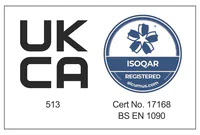
Universal Steel RSJ Beams
Dedicated to the local steel using community and serving everyone from private individuals with one off requirements to general builders,  engineers and fabricators throughout the entire North West and Yorkshire regions.
engineers and fabricators throughout the entire North West and Yorkshire regions.
Open from 8.00am until 4.30pm Monday to Friday, our sales team are here to help and await your call.
Our ‘off the shelf’ service allows customers to call in, order, pay for and collect their requirements in one short visit. Alternatively, materials can be delivered to site on a pre-arranged day.
For the more complex of requirements, technical drawings can be hand delivered, emailed or faxed prior to quotation. When final details have been agreed, our fabrication department will carry out the required work before final collection/delivery.
Please note we accept all major credit cards.
About Universal Beams
Strong, versatile, and resilient – it’s no surprise that steel is one of the most widely used construction materials in the world. The construction industry accounts for more than 50% of the global steel demand and its versatility lends itself to a range of applications.
RSJ beams are renowned for their ability to maintain structural integrity and provide support across various construction projects. But to use universal beams as effectively as possible, you’ve got to learn all about them. Let’s explore them in greater detail.
What is a universal beam?
Also referred to as a UB or universal steel beam, universal beams are robust, structural steel shapes typically used for large-scale building projects. You can think of RSJ beams as the skeletal structures of a building, or the stabilising supports in bridges, roofs, or floors.
There are a wide range of universal beams sizes, making them incredibly versatile; plus, their dimensions are standardised, which helps promote greater consistency and ease of use during the construction process. Generally, universal steel beams will have an I or H shape when viewed from the side.
Without an integral structure and sturdy foundation, you are likely to encounter some serious difficulties in the future. From decreased longevity to operational issues, securing the highest quality steel RSJ beams is essential. Finding the right RSJ suppliers near me is the first step towards ensuring an exceptional and reliable use of universal steel beams.
What do UC and UB mean in beams?
UB stands for Universal Beams whereas UC stands for Universal Columns. Both UB and UC are structural steel shapes used to provide support and stability in a wide range of construction and engineering projects. However, there are some notable differences between the two.
Universal Columns are long and slender, allowing them to support heavy loads in a vertical orientation. Their rectangular cross-section provides the necessary strength to avoid any twisting as they support the downward weight of the structure above them. UCs are often used as vertical support columns in building frames or foundations.
Contrastingly, Universal Beams are broad and flat, which helps them support heavy loads in a horizontal orientation. Their wide flange increases the load-carrying capacity while simultaneously increasing its ability to withstand deflection and bending. This sturdy shape provides plenty of stability and helps sustain extremely heavy loads. RSJ beams are vital components of building frames and are commonly used to support roof or floor structures.
What are the 5 types of universal beams?
Universal beams are classified by their shapes, sizes, and how they’re attached to the structure of the building. The universal beams sizes and types you need will vary according to the specifications of your construction project.
If you’re looking for RSJ for sale, learning how to differentiate between the different RSJ sizes and prices is vital. Here is a closer look at the five most common types of universal steel beams.
Simply supported
Simply supported beams are steel RSJ beams that are free to move horizontally and rest with two supports (one at either end). One end of the beam has a pinned or hinged support, while the other end of the beam has a roller support, allowing the beam to rotate or pivot. There are no additional points of support in between. These RSJ beams are typically used as bridge girders or roof and floor beams.
Fixed
As the name suggests, fixed steel RSJ beams are those that are welded or bolted into place. Since the supports are fixed in place, these types of universal steel beams cannot rotate vertically or horizontally. Instead, these RSJ beams are designed to provide a rigid support that prevents deflection. Fixed universal steel beams can be found in overhead cranes, structures along roadways, and as additional support for tall buildings or stadium roofs.
Continuous
Continuous steel RSJ beams are those that feature a string of multiple supports across the beam. One way to visualise continuous RSJ beams is to imagine a single beam supported by a series of columns along its length. These are often used when longer spans with even distribution are required. Continuous RSJ beams are employed in multi-span bridges, large industrial warehouses, and high-rise buildings.
Overhanging
Overhanging beams have one or both end portions extend further than the supporting structures. Typically, overhanging beams feature a hinge support or a roller support. One of the most common uses for overhanging RSJ beams is the creation of balconies that extend beyond the building’s main structure.
Cantilever
Cantilever beams are constrained with a fixed support on one end and extended freely on the other. The fixed support works to prevent horizontal movement and rotation whereas the free end can carry loads and support design functions such as balconies, overhangs, or diving platforms.
What is the strongest structural beam?
The strongest structural RSJ for sale must be the I-beam. They are a staple in the construction of large-scale projects and their versatility is widely recognized in the steel structure industry.
The I-beam’s name is derived from its shape, which resembles an I. This steel structure features broad horizontal flanges on both the top and bottom, as well as a central vertical web. When viewed from the side, the cross-sectional shape appears as an I.
The wider flanges of the I-beam help improve the inertia of the beam, which contributes to a greater load-carrying capacity. Similarly, the broad characteristics of the I-beam ensure a more even distribution of weight across the length of the beam and enhanced stability. It also provides ample surface area to help forge a connection with other structural elements.
I-beams are considered the strongest universal steel beams because they can resist buckling under pressure and withstand extreme lateral forces such as high winds or earthquakes. Beams in this position should bend rather than buckle as they carry large loads. Buckling exerts additional tension and can compromise the stability and safety of the structure. Overall, the I-beam is the optimal choice for its versatility and high load bearing capacity.


